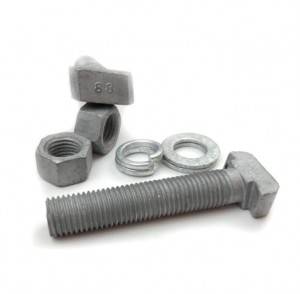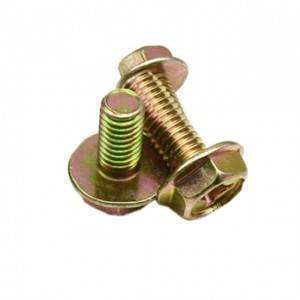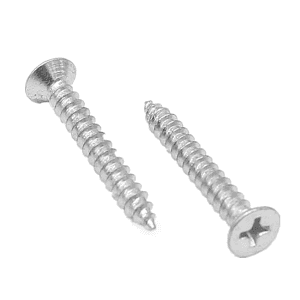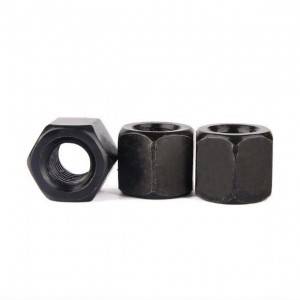Good Quality Custom Flat Head Cross Black Wood Construction Screw China Drywall Screw Self Tapping
| Brand Name | Jinhe |
| Model Number | JH-0010 |
| Standard | ISO |
| Product Name | Drywall Screw |
| Size | M4x12mm |
| Material | Stainless Steel |
| Finish | Zinc Plated |
| Head Type | Flat Head Countersunk Cross Screw |
| Color | Black |
| Package | 15000 Pcs/Carton |
| Hardening Requirements | HV600-700 |
Self tapping drill tail wire is a special type of screw with unique design and various excellent characteristics.
Its characteristics include:
1. Self attack performance: No need for pre drilling, can directly attack on the material, saving construction time and process.
2. Drill tail design: The tail is shaped like a drill bit, which can easily penetrate materials and improve installation efficiency.
3. Tightening ability: It can provide strong fastening effect and is not easy to loosen.
4. Diverse materials: Common ones include stainless steel, carbon steel, etc., to adapt to different usage environments and needs.
Self tapping drill tail wire is widely used in fields such as construction, metal structures, and furniture manufacturing, commonly used to fix materials such as metal plates, plastic plates, and wooden boards.

When choosing the specification and model of self tapping drill tail wire, the following factors need to be considered:
1. Thickness of the fixed material: Select the appropriate length of drill tail wire according to the thickness of the material. Generally, the length of the drill tail wire should be slightly greater than the thickness of the material to ensure a firm fixation.
2. Material of the fixed material: Different materials have different hardness and strength, and it is necessary to choose drill tail wires with corresponding strength and diameter. For example, for harder metal materials, thicker and stronger drill tails may be required.
3. Force situation: If the fixed structure will bear significant tensile, compressive, or shear forces, a drill tail wire with a larger diameter and higher strength should be selected.
4. Installation space limitation: Consider the space size of the installation location and choose a drill tail wire with a suitable head shape and size to ensure smooth installation.
5. Rust and corrosion resistance requirements: Select materials with corresponding rust and corrosion resistance properties based on factors such as humidity and corrosiveness of the usage environment, such as stainless steel drill tail wire for use in humid or corrosive environments.
6. Aesthetic requirements: In some situations where there are high requirements for appearance, it may be necessary to choose drill tail wires with smaller heads and regular shapes.
The common specifications and models of self tapping drill tail wires will indicate parameters such as diameter, length, and head shape. You can choose based on your specific usage needs, taking into account the above factors.

General installation method for self tapping drill tail wire:
1. Prepare tools: Select a suitable electric drill and ensure that its speed is within the specified range. At the same time, prepare a batch head or sleeve that matches the self tapping drill tail wire.
2. Adjust the drill locator: Adjust the locator of the drill to the appropriate position to ensure that the self tapping drill tail wire can be drilled to the correct depth.
3. Install the batch head or sleeve: Install the selected batch head or sleeve onto the electric drill and insert the self tapping drill tail wire into it.
4. Vertical installation: Place the self tapping drill tail wire perpendicular to the electric drill, and apply force to create a center point that is perpendicular to the surface of the material to be fixed.
5. Apply appropriate pressure: Use your hand to apply about 14 kilograms of force on the drill, ensuring that the force is on the same vertical line as the center point.
6. Start the electric drill: Move the electric switch and do not stop halfway until the self tapping drill tail wire is in place, then quickly stop drilling.
During the installation process, the following points should be noted:
1. Choose the appropriate specifications and models for the self tapping drill tail wire, based on the thickness and material of the fixed material.
2. Ensure that the speed adjustment of the electric drill is correct, as self tapping drill tail wires of different diameters and materials may require different speeds.
3. During installation, the self tapping drill tail wire should be kept perpendicular to the material surface to ensure the firmness of the installation.
If the welding points of the steel purlin affect the self drilling ability of the self tapping drill tail wire, you can try to use the reverse rotation speed to withdraw it, and then use the second self tapping drill tail wire to drill through.













